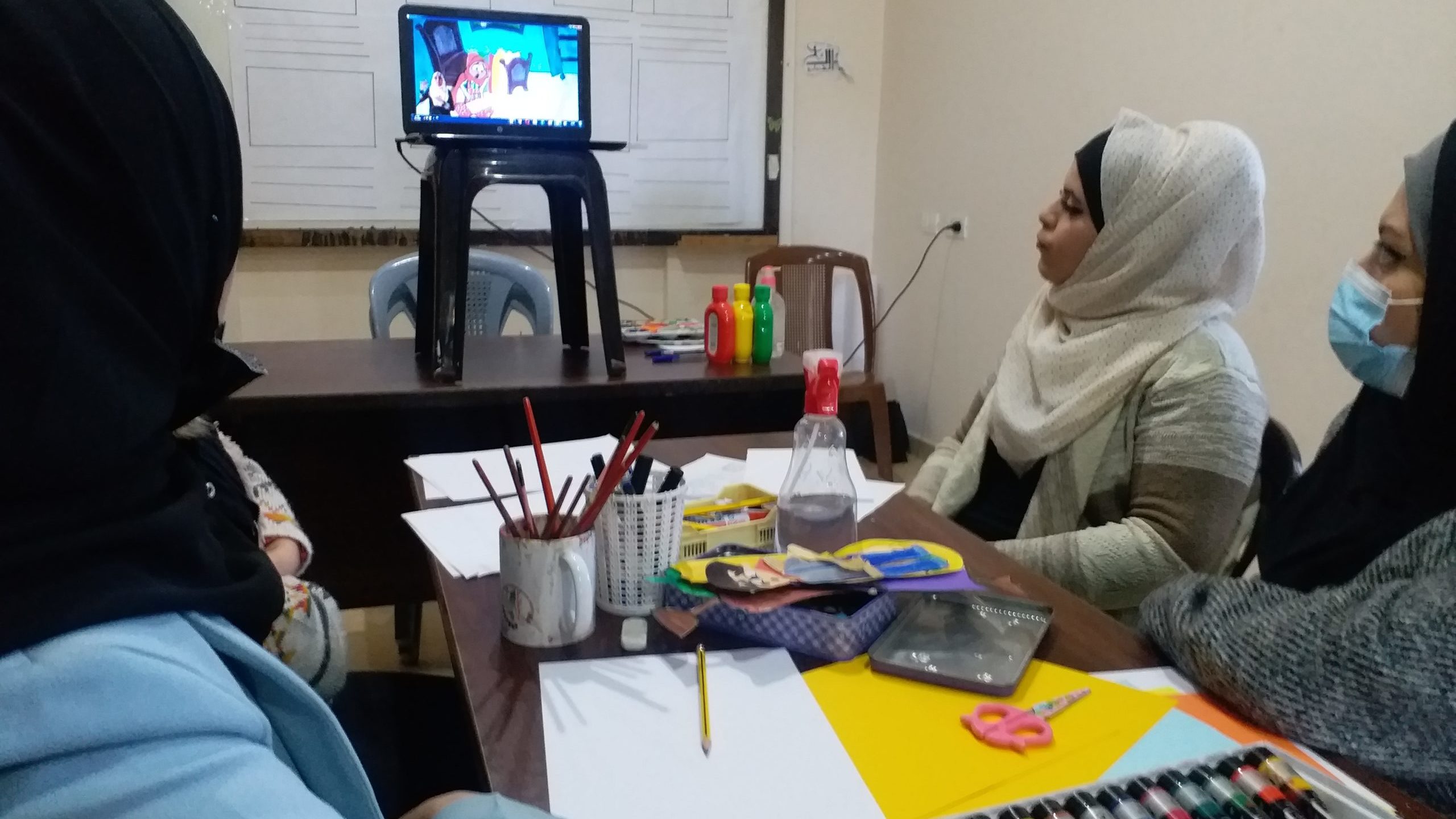Hearing-Impaired Women in Gaza Integrate into Society Using Cartoon Making
Today's acquired skills will be tomorrow's source of income for these young women with hearing disabilities.
For many reasons, mainly political and economic, disabled Palestinians could be considered even less fortunate, since the majority of them live marginalized lives in deep poverty, and drenched in despair and fear. Yet many of them have managed to thrive and become a resounding success once they were given new opportunities.
There are nearly 93,000 persons with disabilities in the Palestinian territories, according to a 2019 report from the Palestinian Central Bureau of Statistics, 48% in the West Bank and 52% in the Gaza Strip.
People with disabilities, particularly those living in the coastal enclave of Gaza, face an extra dose of serious hardship every day of their lives and every time they interact with the community.
A research paper published on the website of the AlWatan Voice in September 2020, titled “Needs of people with disabilities in the Gaza Strip and the coronavirus pandemic is everyone’s responsibility,” found that, in general, people with disabilities in Gaza have long encountered tremendous challenges related to accessing information and services, participating in society and finding ways to deal with these difficulties.
For those with hearing impairments in particular, the situation became even worse due to the COVID-19 pandemic.
According to the research paper: “Every four days, a deaf person needs a battery for their hearing aids, meaning about two battery packs per month, which is equivalent to $10-$12 … yet, in light of the [coronavirus lockdown], people with disabilities cannot reach the stores to purchase batteries.”
Another problem, according to the research paper, is “the lack of direct sign language interpreting for persons with a hearing impairment regarding everything that is going on in the coronavirus pandemic, including bulletins, educational materials, news, reports or briefs issued by the official authorities.” The hearing impaired, therefore, are among the most negatively impacted by the crisis.
The need for creative initiatives, given such tough challenges, has become indispensable. In an attempt to empower and socially reintegrate hearing impaired females in Gaza, the Himam Youth Center launched, two weeks ago, a significant initiative that seeks to enable deaf young women to acquire a new skill – making artistic cartoon films. Using this skill, they are able to transfer their experiences and reality to society using stop motion animation technology.
“The training, which consists of several stages, including story extracting, drawing, coloring, animating and, finally, sound projecting, targeted 16 females, eight of which are with hearing impairments who have drawing talent,” Haneen Kurraz, animated cartoon coach and coordinator of the initiative, told The Media Line.
This is a unique training. I truly enjoy spending my time here learning new things and dealing with girls with and without disabilities
The main goal of the initiative, according to Kurraz, is to give the women the chance to socially interact with others and to be empowered through gaining cartoon-making skills.
Eslam Khattab, 26, one of the female participants who has had a hearing disability since birth, expressed her happiness to The Media Line using sign language, saying: “This is a unique training. I truly enjoy spending my time here learning new things and dealing with girls with and without disabilities.”
Khattab stressed the importance of adapting institutional bodies to suit the needs of people with impairments.
“I felt depressed many times when I applied for a job, an internship, or a training opportunity, and they apologized to me saying ‘sorry we don’t have suitable tools or mechanisms to deal with your disability.’ But this time, the place and the training itself is adapted to fulfill our needs. We deeply need that kind of support,” she said.
Even though there is no financial return for the hearing-impaired women from the initiative, it has opened doors for new offers to come.
“The girls have recently received several offers including a Ramadan advertisement and a collaboration to make a science fiction cartoon with the Shababeek team,” Kurraz said. Shababeek is an organization that trains refugee youth to develop media skills and use them to portray what life is like in the refugee camps.
I’ve learned to count on myself more, be more confident and less pessimistic
Heba Abujazar, 26, is another talented woman who is planning to work in the cartoon film industry.
“I’ve learned to count on myself more, be more confident and less pessimistic. I’m so lucky and overwhelmed to be part of this experience which will one day be my business. I’ll work on myself and on my marketing skills to make income out of my own cartoon films,” she told The Media Line using sign language.
The productive interaction and the positive atmosphere have significantly improved the psychological statuses of the young women.
“It’s amazing how the activities helped the participants unleash their full power and breadth. In the story-narrating activity, for instance, girls have the chance to express their opinions, emotions and address their issues, which is not normally common given the conservative nature of our society,” Kurraz said.
Gaza-based psychologist Raeda Weshah agreed, saying that such activities have a great influence not only on the participants but also on the entire society.
“When women express their opinions, they feel like their voices are heard, thus they will be motivated to be more creative and more productive. But this is not all. Society, in return, will learn to appreciate those voices and will never underestimate people, mainly women, with disabilities. Using the cartoon film technique will be significant in raising public awareness with regard to hearing impairments because it combines the image, the voice and the information together,” she told The Media Line.

